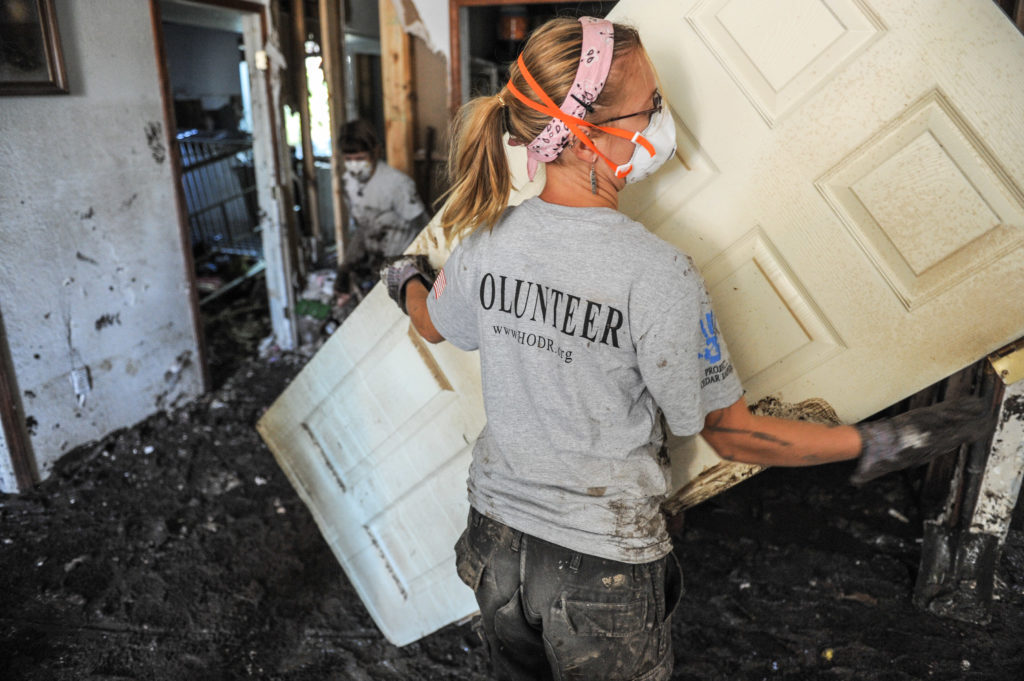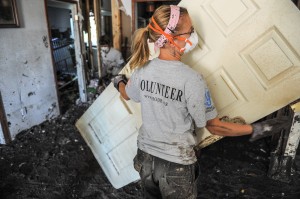
Science of Disasters: Landscape of Disaster Recovery
By Administrator
 This monthly blog series will explore the world of disasters and how Foundation Beyond Belief is creating evidence-based programs to mobilize the secular humanist community to respond.
This monthly blog series will explore the world of disasters and how Foundation Beyond Belief is creating evidence-based programs to mobilize the secular humanist community to respond.
After a disaster occurs a variety of organizations from inside and outside the impacted area become involved in the recovery process. Recovery can be thought of as restoring, rebuilding, and reshaping impacted areas (Smith & Wenger, 2007). Various government agencies become involved depending on the size, nature, and location of the event. Federal, tribal, state, and/ or local government, with agencies ranging from FEMA to HUD, become involved in recovery following a disaster.
Nonprofits are involved throughout both the short- and long-term recovery efforts. National organizations that specialize in various elements of recovery will come into the community to offer their expertise. For example it is typical to see several rebuilding organizations show up in the impacted area in the weeks following a disaster. Nonprofits that exist in the impacted community, assuming they are not themselves detrimentally impacted, will evolve their organizations to meet the needs in the community. For example, a food pantry that provides food for the homeless in non-disaster times may extend their services to coordinate the distribution of food more broadly to volunteers and impacted families.
Businesses in the community and outside of the community will also become involved in various ways. Local businesses may offer discounted or free food and water to volunteers. Non-local businesses may also become involved. For example, Tide’s “Loads of Hope” program provides laundry facilities to survivors.
Finally, if the presence of all these organizations is still not enough to meet the needs of the community, new groups may form. Some of these groups only last a short time (Stallings & Quarantelli, 1985) while others continue to exist for many years (Montano, 2014).
Considering how many organizations and agencies become involved, it is unsurprising that the recovery can be quite complicated, often going uncoordinated. Nonetheless the work these organizations do are critical to the recovery of the overall community. In fact their combined actions is what determines how recovery goes (Alesch, 2009).
Nonprofit organizations play a fundamental role in recovery. Foundation Beyond Belief is excited to join other nonprofits in this endeavor to ensure that survivors are not forgotten after immediate life saving needs have passed.
References:
Alesch, D., Arendt, L., & Holly, J. (2009). Managing for long-term community recovery in the aftermath of disaster. Fairfax, VA: Public Entity Risk Institute.
Montano, S. L. (2014). Formation and lifespans of emergent recovery groups in post-Katrina New Orleans. Thesis at North Dakota State University.
Smith, G. P., & Wenger, D. (2007). Sustainable disaster recovery: Operationalizing an existing agenda. In Handbook of disaster research (pp. 234-257). New York: Springer.
Stallings, R. A., & Quarantelli, E. L. (1985). Emergent citizen groups and emergency management. Public Administration Review, 93-100.
